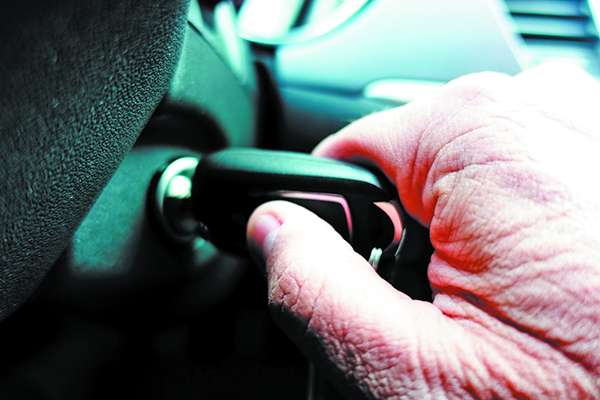Every summer, I hear at least one sad story of a person who drowns in a place where there is plenty of help to be had — whether boating… at a crowded beach… or in a pool with lots of people nearby. Why do we let this happen to each other? The answer, all too is often, is that most of us are clueless about what a drowning person actually looks like. So I set out to educate myself — and all of you — about signs that indicate a person may be drowning.
I called a nationally recognized expert on the topic, Linda Quan, MD, a pediatric emergency physician at Seattle Children’s Hospital and professor of pediatrics at the University of Washington School of Medicine. She told me that this is important information to take in — because you have only about a minute to react and rescue a drowning person before he/she goes under. Drowning happens quickly — the larynx goes into spasms, shutting off air flow and thus oxygen and leading to cardiac arrest. In her 30 years of studying this topic, Dr. Quan told me, “the thing you keep hearing, over and over again, is that the people around a drowning victim didn’t know it was happening.”
If that surprises you, you probably think there are obvious signs that signal a person’s distress in the water — such as splashing, screaming and thrashing about. But no, Dr. Quan said…
A person who is drowning cannot call for help.People instinctively try to keep what air is in their lungs — screaming expels that air. Also, she said, most drowning victims inhale water very early on and are unable to make a sound.
A drowning person doesn’t usually appear desperate.Describing it as “almost understated,” Dr. Quan said that in the process of drowning, a person stays in one spot in a vertical (upright) position. “All their effort goes toward keeping the nose and mouth above water, which means they can’t move or propel themselves out of danger,” she explained. “That’s why people so frequently drown even though they are close to shore — they just can’t get there.” There’s also great fear, which is paralyzing in its own right.
It happens fast — unbelievably so.“Generally, once a person gets into trouble, you have 30 to 60 seconds before he or she goes down and doesn’t come back up,” Dr. Quan said.
Signs of Trouble
Before I get into the signs that indicate a person is in danger of drowning, it’s important to note that drownings among young children can be very different — for instance, they struggle less and sink faster in deep water. An babies and toddlers do not even need to be fully submerged — a study recently published in the journal Pediatricsreports that about two dozen children in the US die each year in shallow, portable wading pools. Basic advice — don’t take your eyes off a child for the time it takes to make a cell-phone call.
Speaking more broadly, Dr. Quan identified the following signs that a person in the water needs rescue…
- The body is vertical in the water rather than in the much more sustainable position of floating on the belly or back.
- His or her head bobs to the surface once or twice… then disappears, with little of the dramatic thrashing you might expect. If you can see the arms at all, they are flailing or reaching upward. “It’s kind of an exaggerated movement that can be mistaken for fooling around,” Dr. Quan said, noting that therefore with teens, in particular, onlookers may be slow to react.
What Should You Do?
If you see any of these signs, do not hesitate for a second, Dr. Quan urges. And don’t worry about feeling foolish. Dr. Quan recalled that in her own community, a fellow physician was unable to revive a teen who he actually saw drowning — the boy’s brother had insisted that the teen was just joking around, and the few minutes the doctor waited to jump in and grab the boy proved too many. When you notice any of the above signs, you should…
- First and foremost, shout for help and do everything you can to attract the attention of a trained lifeguard. Simultaneously, if possible, dial 9-1-1 or instruct someone else to do so. Be aware that there are certain distinct dangers facing rescuers. The sad truth is there are often not one but two drownings — the victim and the would-be rescuer. A drowning person will instinctively do everything possible to stay alive, often, tragically, trying to climb up onto someone attempting a rescue and dragging the rescuer down. However tempting, unless you are certain of your own safety, do not get into the water unless you have been trained in how to safely perform an in-water rescue.
- What you can do safely, if no lifeguard is around, is to grab a long stick or pole and extend it for the drowning person to grab onto. Hold on firmly and pull the person in, but don’t let the person pull you into the water. You also can grab and throw something that floats (such as a raft, lifejacket donut life preserver or even a beach ball or a styrofoam cooler) to the person who is drowning, providing something he or she can hold onto to get to shore or to the pool’s edge. Assess the situation and if able and capable, act immediately. Remember to keep yourself safe.
Most important, said Dr. Quan, never assume that any swimming situation is perfectly safe — stay alert and focused on what’s happening in the water and you may end up saving a life.



